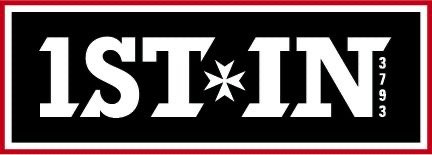Test your pistol and carbine skills with cold drills
Do you know what skills you absolutely own, what you can do right now, on demand? It’s important to know how you might perform if called on – without any warning – to draw your gun in self-defense.
I define on demand performance to mean you can perform hard skills, on the spot, completely cold, without having any idea what the drill or situation is. That includes factors like distance, course of fire, par time, etc. And you need to do it well. Note, I didn't say perfect. I didn’t say your best. You need to do it well. And that means with proficiency. Because the real world will absolutely require you to perform on demand.
A great way to solve for this is by performing cold drills. While dry fire and live fire drills allow you to practice skills by putting in reps, they don’t give you the complete picture. Cold drills give you the extra feedback you need to test and fairly accurately assess your current skill level for a one-chance response self-defense encounter.
The benefits of cold drills – Just hang the target and run it!
This is critical. No warm-up. No practice reps. No dry draws at all. Cold drills are a great way to test not only your technical skills, but cold drills will test you mentally as well.
Being called on to perform any drill – especially in front of people – will induce some stress. This is a valuable tool to strengthen your skills. Embrace that feeling. Use it to learn and get better. You’ll get a fairly accurate assessment of what your on-demand performance would look like. Don’t be afraid of an ugly target. You want to be able to assess what works well and where some more practice may be needed. This assessment can then be used to inform where you focus your dry fire practice. Was your grip off? Did you fail to clear your garment sufficiently? Were you unable to find the dot?
We can’t afford to fail in the real world. Cold drills help prepare you and set you up for success by elevating your stress level and allowing you to experience what it may be like to engage a threat with only one chance to get it right. Without that test, how you imagine you will perform in that situation may not play out the way you think.
Your goal should be to reach a repeatable level of proficiency drawn from training and practice that you can bet on – not just a theory. Dependable, reliable skills come from hundreds of reps performed in dry fire sessions with confirmation on the range with live fire.
When was the last time you measured your performance?
Like a runner knows his times for different distances, you need to have a baseline for your draw, rounds on target, how long it takes to move through and complete drills for a physical assessment, gun handling, etc.
Being able to track progress is important. If an active shooter turns the corner while I’m in a grocery store aisle, how long does it take me to ID the threat, obtain a focal point, turn, draw, index and get accurate and accountable hits on target at 30 yards – completely cold with no warmup – in my everyday clothes? Being able to answer this question is critical. Knowing it takes five seconds vs. sub two seconds makes a big difference and can be an area of focus for practice. The worst answer would be “I don’t know.”
This is not an exercise in tactics.
I use cold drills to assess hard skills, not as an exercise in tactics. I run basic drills assessing a single skill to more complex multi-skill challenges. Cold drills can and should be changed up. How you design a drill is only limited by your imagination. If a drill becomes too easy or predictable, then change up the course of fire, cut par times, increase or decrease distances, add movement or turns, add or remove layers of clothing.
When designing my cold drills, my focus is testing what I can do right now, on demand. I want to assess my hard skills and add mental and physical stress in the form of a timer and movement. The drills are either pass/fail or hit factor scored to measure progress. If there are range limitations, I may run static drills. If I don’t have limitations, I incorporate movement and multiple hard skills into one run. I try different things that have utility and value in my life and my circumstances.
How to assess your performance
From a defensive standpoint, cold drills are critical to assessing your current skill set. After running a cold drill and scoring it there are a few things I assess:
• Did I run it with no mistakes?
• If mistakes were made, where and why?
• If no mistakes were made, are there areas where I can push myself to get better? Speed, movement, marksmanship?
• Is my training and practice reflecting my daily life? What am I likely to encounter?
• If this was real, what would my chances of going home looked like?
Having a gun gives you the potential to fight back. It doesn't give you the skill set to fight back.
Have you been dry firing enough? Confirming on the range? Test yourself and find out.
Prioritize your training.
Build on-demand performance through drills that develop and pressure test speed, accuracy, distance, and movement with your gun.

